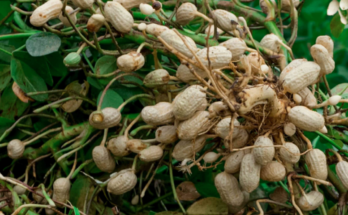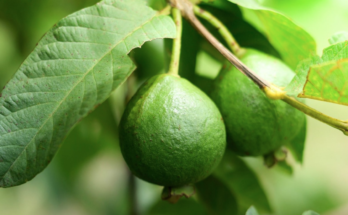How to Grow Fruit Trees in Containers is a great solution for small spaces. Growing fruit trees in containers opens up possibilities for those with limited space or those living in urban areas.
Whether you’re looking to brighten up your balcony or maximize a small patio, fruit trees can flourish in pots just as they do in the ground—with a few special considerations.
This method offers flexibility, mobility, and the joy of picking fresh fruit right from your doorstep. Let’s dive into how to grow fruit trees in containers and bring the orchard life to your home.
How to Grow Fruit Trees in Containers?
To grow fruit trees in containers, I start by selecting the right dwarf tree for my space. Dwarf varieties are ideal for small areas. Then, I choose a container that is at least 15-20 gallons with proper drainage holes.
I use a well-draining potting mix and avoid heavy garden soil. After planting, I water deeply and consistently to keep the soil moist.
I place the container in a sunny spot, ensuring at least 6-8 hours of sunlight daily. Regular pruning helps keep the tree healthy and encourages fruit production. Consistent fertilizing also boosts growth.
1. Choosing The Right Fruit Tree
The first step is selecting the right tree for your container garden. Not all fruit trees are well-suited for pots, so it’s essential to choose wisely. Here’s what you should consider:
- Space and Climate: Think about the space you have and the climate in your area. Citrus trees like lemons and limes thrive in warm climates and grow beautifully in containers. If you live in a cooler climate, consider dwarf apple or cherry trees.
- Dwarf vs. Standard Varieties: For container gardening, dwarf varieties are the way to go. These are bred specifically for smaller spaces and are easier to maintain. For example, a dwarf lemon tree will stay compact but still provide plenty of fruit.

Some great options include:
- Citrus trees: Lemons, limes, oranges
- Dwarf apple and pear trees
- Fig trees
- Cherry trees
2. Selecting The Ideal Container
Your tree’s container is as important as the tree itself. Here’s what to look for:
- Size: The container needs to be large enough for the tree to grow. A general rule is at least 15-20 gallons for most dwarf trees, but larger is better.
- Material: Containers made from ceramic, plastic, or woodwork well. Each material has pros and cons—ceramic pots look great but can be heavy, while plastic is lightweight but may not insulate roots.
- Drainage: The most critical factor is good drainage. Fruit trees don’t like “wet feet,” so make sure your container has drainage holes. You can also add a layer of gravel or pebbles at the bottom to aid water flow.
3. Potting Mix And Soil Requirements
The soil you use is key to the success of your fruit tree. Choose a well-draining potting mix—avoid using garden soil as it can become compacted and waterlogged in containers.

- Soil pH: Most fruit trees prefer slightly acidic to neutral pH (around 6.0-7.0). You can test the soil pH and amend it if necessary.
- Organic Matter: Incorporating organic compost or well-rotted manure into the mix will help maintain fertility over time, as container soil can deplete quickly.
4. Planting Your Fruit Tree
Here’s a simple step-by-step to get your tree planted:
- Prepare the pot: Place gravel or stones at the bottom of your container for drainage.
- Fill with soil: Fill the container about halfway with your potting mix.
- Plant the tree: Place the tree in the container, ensuring that the root ball sits comfortably with its base slightly above the soil level.
- Add soil: Fill in the remaining space with soil, patting it down gently but not too firmly.
- Water well: After planting, give your tree a good soak to help settle the soil.
As your tree grows, you may need to report it every 2-3 years to give the roots more room and refresh the soil.
5. Apply Mulch
Mulch plays an essential role in keeping your container-grown fruit tree healthy. A layer of mulch helps regulate soil temperature, retain moisture, and suppress weed growth.
It also adds nutrients to the soil as it breaks down, further enriching the tree’s growing environment. Apply a 2–3-inch layer of organic mulch such as wood chips, shredded bark, or straw around the base of the tree, but avoid piling it directly against the trunk to prevent rot.
Mulch also helps maintain moisture levels, which is crucial for trees in containers as they dry out faster than those planted in the ground.

6. Watering And Feeding
Container-grown trees dry out more quickly than those in the ground, so keeping up with a regular watering schedule is crucial.

- Watering: Water deeply until water flows from the drainage holes. Depending on the weather, you may need to water every day in hot climates and less frequently in cooler months. The key is to keep the soil consistently moist, but not waterlogged.
- Signs of overwatering/underwatering: Yellow leaves can indicate overwatering, while wilted or dry leaves can signal underwatering.
- Fertilizing: Use a balanced, slow-release fertilizer in spring and summer to give your tree the nutrients it needs. Consider using a fertilizer designed for fruit trees for optimal results.
7. Pruning And Maintenance
Pruning helps keep your tree’s shape, encourages fruit production, and maintains the health of the tree. The good news is that container trees are often easier to prune because they’re more compact.
- Prune regularly to remove dead or diseased branches and to keep the tree from becoming too leggy.
- Thinning out fruit can help your tree focus its energy on fewer, better-quality fruits. Too much fruit can strain the tree, leading to smaller or lower-quality produce.
8. Sunlight And Placement
Most fruit trees need at least 6-8 hours of sunlight a day. Position your container in a sunny spot—ideally on a south-facing balcony or patio. If your tree is indoors during the winter, place it near a bright window.
Seasonal considerations: During winter, some trees may need to be brought indoors if they aren’t frost-hardy. Keep them in a cool, well-lit area.

9. Common Challenges And Solutions
Growing fruit trees in containers comes with its own set of challenges, but they’re manageable with a little planning.
- Pests: Keep an eye out for common pests like aphids, spider mites, and scale. A strong spray of water or an insecticidal soap can help.
- Root crowding: Over time, roots can become pot-bound, meaning they don’t have enough space to grow. Repotting helps, but you can also prune the roots when necessary.
- Fruit production: Container trees may produce less fruit than those grown in the ground, but proper care—especially pruning and fertilizing—can ensure good yields.
FAQ
How often should I report a fruit tree?
Report your fruit tree every 2-3 years or when the roots start circling the container, indicating they need more room.
Can I grow fruit trees indoors year-round?
Yes, some fruit trees like citrus can grow indoors year-round, provided they get plenty of light. However, many trees benefit from being outside during the summer.
What are the signs of root rot?
Root rot is caused by overwatering or poor drainage. Signs include yellowing leaves, wilting, and a foul smell from the soil. If you suspect root rot, check the roots for mushiness and repot the tree in fresh, well-draining soil.
How long does it take for a container-grown tree to bear fruit?
The time it takes for a tree to bear fruit depends on the type of tree and growing conditions. Some trees, like lemons, can produce fruit in as little as 1-2 years, while others, like apples or cherries, may take 3-5 years.
Conclusion
Growing fruit trees in containers has been one of my favorite gardening adventures. It’s amazing how much you can do in a small space! With the right tree and container, you can enjoy fresh fruit from your balcony, patio, or even indoors.
I’ve seen firsthand how rewarding it is to nurture a tree and watch it thrive. Remember, choose dwarf varieties for easier management. Water consistently, provide plenty of sunlight, and prune regularly.
These simple steps keep your trees healthy and productive. Don’t get discouraged by the challenges—pests, root crowding, or limited fruit production. There’s always a solution.
Most importantly, have fun with it! Gardening in containers offers flexibility and creativity. So, get started, experiment, and enjoy the fruits of your labor—literally! So why not get started today? Happy planting!



